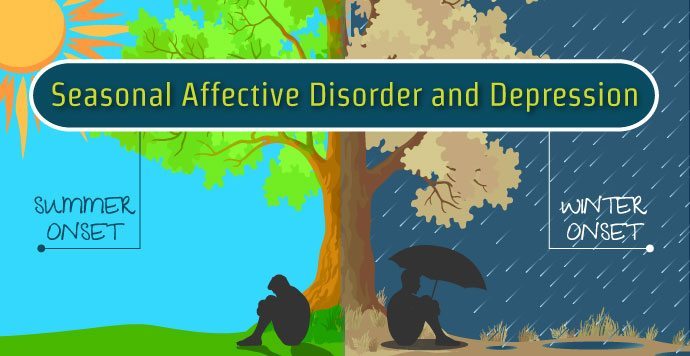
It’s easy to get the blues in the winter. The gloomy weather, post-holiday food comas, and post-holiday return to routine can really get you down. But most of us continue on with our daily lives, dreaming of warmer days.
For some people though, the winter blues are more than an inconvenience. Seasonal affective disorder (SAD) is a legitimate mental illness where sufferers experience anxiety or depression during a certain season. It may sound too crazy to be true, but it’s a legitimate “course specifier” for major depressive disorder in the DSM-V!
With winter in full swing, it’s the perfect time to learn about SAD.
Symptoms
SAD manifests in many of the same ways as traditional depression. Sufferers may be withdrawn, have low appetite and sex drive, or experience feelings of general malaise and sluggishness. More extreme cases can result in oversleeping, nausea, and even suicidal thoughts.
The disorder’s symptoms do change depending on the season. Winter symptoms are more depressive, whereas summer episodes tend to show more eating issues and anxiety.
Causes
Scientists disagree as to the exact causes of SAD, but many theories are rooted in our history. Many nonhuman animals – bears for example – exhibit behavioral changes in winter. Early humans fought through brutal winters with scarce food, and may have evolved the trait as a survival mechanism. Because SAD is prominent in females, some experts believe it may be linked to reproduction or a motherly instinct.
Other theories center on the darkness of winter. Our bodies naturally produce melatonin, a chemical that makes us sleepy, in dim light. A lack of serotonin is also a possible cause, similar to that of general depression.
Treatment
The good news is that SAD can be treated using the same methods as non-seasonal depression. Selective serotonin reuptake inhibitors (SSRIs) have proven to be 67 percent effective, with their efficacy increasing when paired with cognitive behavioral therapy.
A SAD-specific treatment is light therapy. All light has a specific color temperature; lower temperatures are warm (candlelight) and higher temperatures are cool (a computer screen.) Daylight is considered a “cool” temperature. Light therapy uses a specialized lamp to mimic the temperature of daylight, helping counteract overcast winter weather. The lamps are widely available and generally affordable, with most under $100.
Therapy is helpful for any variety of depression, seasonal or otherwise. If you need guidance for managing your seasonal depression, 3-C can help! Contact us today and let’s make your winter a little brighter.



